#marie perrault
Explore tagged Tumblr posts
Text

I have a lot of mixed feelings about Susan Kay (wow so wild wow so different), but I will absolutely go to the mat for my icon and queen, Marie Perrault.
131 notes
·
View notes
Text
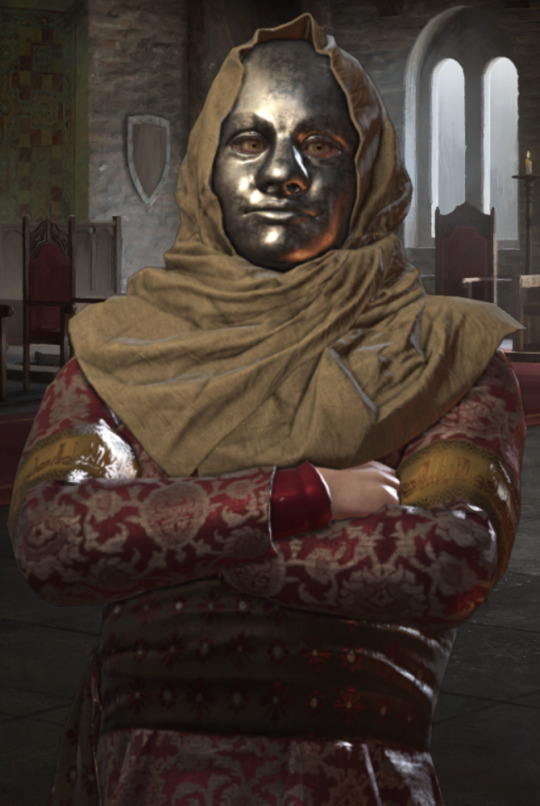
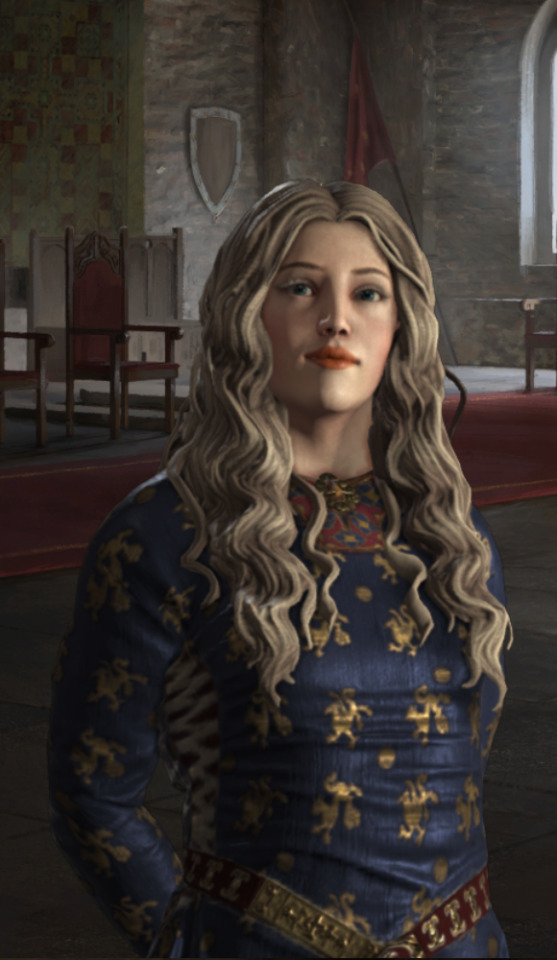
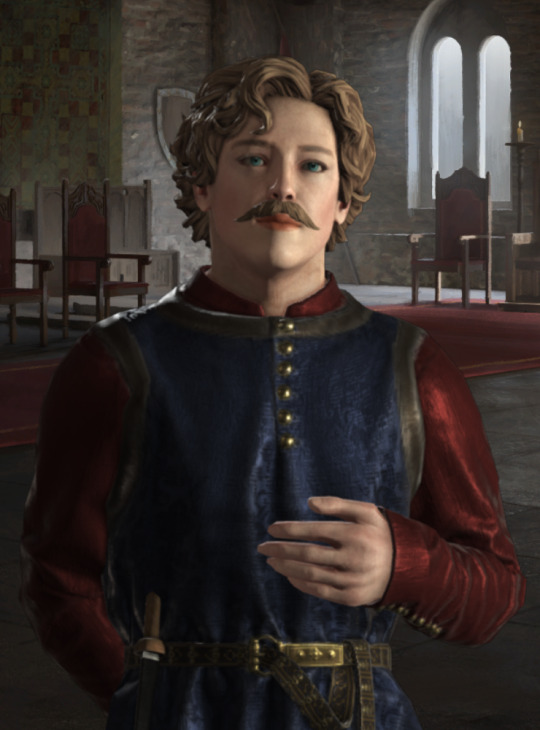



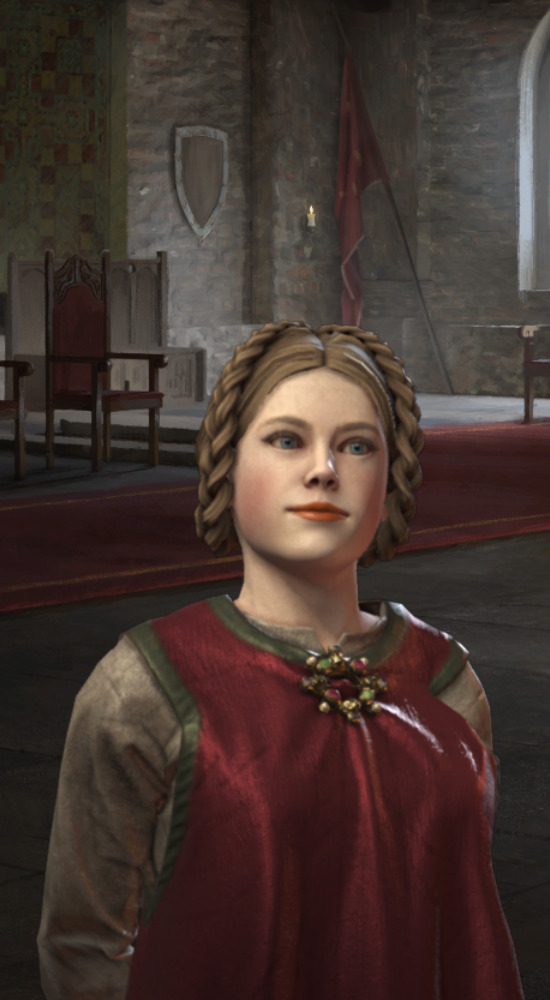




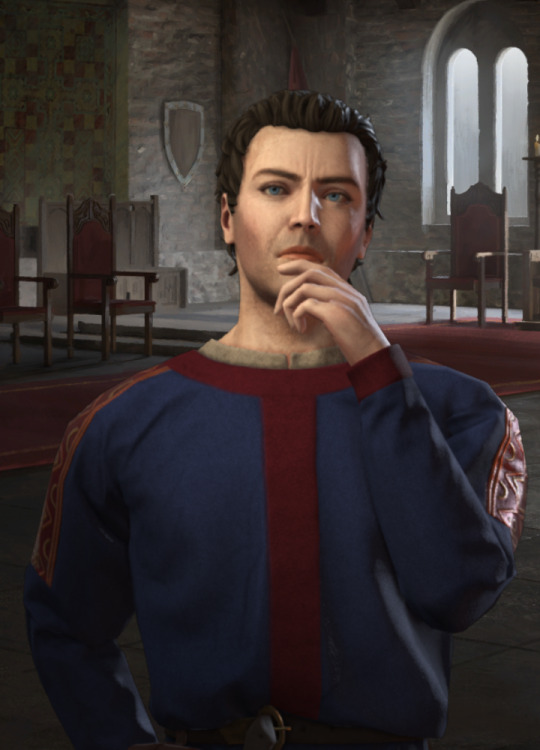


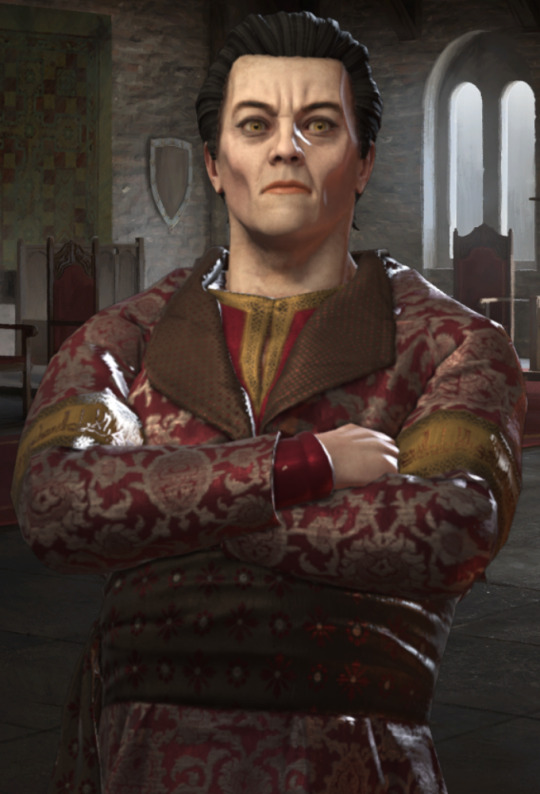

It has been a while, but I have definitely still been playing with PotO in CK3 since my first post. Got delayed a bit by the Tours & Tournaments expansion making me pick between the AGOT mod and the expanded base game. I sorely miss some of the hair styles I used in the AGOT mod take, especially for Christine and Meg, and omg the customize options are so much more limited in base. On the plus though, glitches are WAY less common and I was able to make far more characters this time around!
Gonna hold off on doing detailed shots from before for now, since I'm crossing my fingers for an AGOT update + glitch fix to get me back those hairdos, ~but~ have a much fuller cast this time around! We'll see if I add more characters from the musical/books before the update or break out some ocs already made.
You can click ALT for names. I'm curious how many takes people like or recognize, particularly with the Leroux or Kay-specific kids!
#phantom of the opera#poto#the phantom of the opera#ck3#poto ck3#erik (poto)#christine daae#raoul de chagny#nadir khan#the persian#meg giry#madame giry#philippe de chagny#madeleine (kay)#marie perrault#etienne barye#giovanni (kay)#luciana (kay)#did they have a last name? I don't recall (see: too lazy to grab the book right now)#where will this end? who knows. usually game updates send me back to step 1 with incompatible saves
33 notes
·
View notes
Text

August 2024 Wrap Up
And just like that summer is over. It went by in the blink of an eye. It was a good, if uneventful, month. I had my birthday, which always means new books! And that's enough to make me happy haha.
(Also please click the photo for better quality. Why must tumblr make them look bad?)
Books Read: 9
And it was a pretty great reading month! My favorite was Red Comet, which is current my top read of the year. And I don't think anything better is going to come along, but you never know. My least favorite was A Lesson in Vengeance, which I found disappointing. I was interested in what was happening, but there were a lot of small details that just ruined any believability for me. I also read my first book in French! I'm really proud of myself.
The Dry by Jane Harper - 3.5 stars
The Moors and the Fens by Charlotte Riddell - 3 stars
A Lesson in Vengeance by Victoria Lee - 2.5 stars
Birthday Letters by Ted Hughes - 4 stars
The Doctor's Wife by Mary Elizabeth Braddon - 4.5 stars
Six Crimson Cranes by Elizabeth Lim - 4 stars
The Harpy by Megan Hunter - 4 stars
Red Comet: The Short Life and Blazing Art of Sylvia Plath by Heather Clark - 5 stars
Histoires ou contes du temps passé: contes de ma mère l'oie by Charles Perrault - 5 stars
On Tumblr:
Well at least there's a few things here.
July 2024 Wrap Up
Book Quotes: The Dry by Jane Harper
Book Quotes: The Doctor's Wife by Mary Elizabeth Braddon
Tagged: Top 5 Book Poll
On YouTube:
And as always, there's plenty here.
July Wrap Up | 8 books for #janeaustenjuly
What I Read for My PhD in English Literature | Feminist Theory
What Books Have I Reread the Most?
Currently Reading 8/12/24
Birthday Book Haul! (plus some extras)
September TBR | Shaketember, Shorty September, & more!
#booklr#book photography#book photo#august wrap up#monthly wrap up#wrap up#books#red comet#heather clark#charles perrault#a lesson in vengeance#victoria lee#birthday letters#ted hughes#six crimson cranes#elizabeth lim#the doctor's wife#mary elizabeth braddon
14 notes
·
View notes
Text

✨🌹 Yesterday marked the 65th anniversary of Disney’s “Sleeping Beauty”. It turned out to be the last animated fairy tale produced during Walt Disney’s lifetime. I decided to commemorate the movie’s anniversary with a drawing of Princess Aurora as Briar Rose. What I find most challenging about drawing Aurora is the need to faithfully incorporate the design elements crafted by her lead animator Marc Davis, one of Disney’s Nine Old Men. ✨✨
#Princess Aurora#Briar Rose#Sleeping Beauty#character study#Disney fanart#late night drawing#Once Upon A Dream#Maleficent#Flora Fauna and Merryweather#Prince Philip#King Stefan#Queen Leah#King Hubert#forest#Mary Costa#Marc Davis#Walt Disney#Charles Perrault#Eyvind Earle#Tom Oreb#1959 movies
5 notes
·
View notes
Text
you know ur craving spooky stuff when you're rereading kay's phantom for the hundreth time and are probs gonna rewatch 2015 frankenstein tonight.
0 notes
Text
originally, rewrite erik didn't remember boscherville and was in the circus all year long. but i've decided that the off-season exists and he lives in a little house with his parents during the winter! :D
#originally his parents were stuck in a 10 year contract which is super long! :o#my mom said many performers were given 1-5 year contracts and went home for the winter#that gave me so many ideas! :D#and now rewrite erik will remember boscherville! :')#and madame perrault can be in the story more! :D#now she'll be known as auntie marie! ;D#rewrite erik's childhood just got a bit happier! ;)#poto rewritten
0 notes
Text










from the mother
to the fragile, dreaming child.
motherhood is the quiet incantation woven through the fabric of existence, a tapestry stitched with patience and boundless love. the mystic bond is an unspoken vow, a constellation of warmth that defies the cold distance between the finite and the infinite.
in every touch, every glance, a spell is cast, simple and profound, binding the ephemeral to the eternal, where love breathes, a quiet, miraculous force, enveloping all that is small and precious in its embrace.
this is the magic of creation, the alchemy of life, transformed in the quiet act of giving, a boundless journey from the first fluttering heartbeat to the uncharted horizons of tomorrow’s dreams.
S.T. 2019
madonna + child photographed by maria theresa meloni
photograph by lisa sorgini
young mother nursing her child by mary cassatt(1906)
mother and child by leon bazile perrault(1894)
seymour joseph guy(1824-1910)
stephen pan(1963)
goodnight 2 by arthur john elsley
mother and child taken by nell dorr (1940)
photographs of tasha tudor and her children
#art#poetry#photograph#vintage photography#tasha tudor#madonna#mother#motherhood#childhood#mom#poems on tumblr#poems and poetry#original poets on tumblr#original poem#2019#pinterest#motherhood core#mother and child#babies#pregnancy#labor and delivery#loving mother#loving#caring#maternalhealth#maternal#maternal instincts#maternal love#a mothers love#soft heart
198 notes
·
View notes
Text
I'm joining the bandwagon.
44 notes
·
View notes
Text
I was thinking about the difference between the British "fairy" and the French "fée", and suddenly the perfect comparison struck me.
The "fairy" from British folklore is basically Guillermo del Toro's take on the fair folk, trolls, goblins and other fairies in his movies, from "Pan's Labyrinth" to "Hellboy II". You know, all those weird monsters and bizarre critters with strange laws and customs, living half-hidden from humans, and coming in all sorts of shapes and sizes and sub-species and whatnot. Almost European yokai.
But the "fée" of French legend and literature? The fées are basically Tolkien's Elves. Except they are all female (or mostly female).
Because what is a "fée"? A fée is a woman taller and more beautiful than regular human beings. She is a woman who knows very advanced crafts and sciences, and wields mysterious unexplained powers. She is a woman who lives in fabulous, strange and magical places. She is a woman with a natural knowledge or foresight of the past and the future, and who can appear and disappear without being seen. Galadriel as she appears in The Lord of the Rings is basically the best example I can use when trying to explain to someone what a "fée" in French folklore and culture actually is.
(As a reminder: the fées of France are mostly represented by the Otherwordly Ladies of the Arthurian literature - Morgane, Viviane, bunch of unnamed ladies - or by the fairy godmothers of Perrault or d'Aulnoy's fairytales, to give you an idea of how they differ from the traditional "fae" or "fair folk". All female, and more unified, and so human-like they can pass of or be taken for humans. The "fées" are cultural descendants of the nymphs and goddesses and oracles/priestesses of Greco-Roman-Germanic-Gallic mythologies. That's why they are so easily confused with witches when they turn evil, and when Christianity arose most fées were replaced by the figure of the Virgin Mary, the most famous "magical beautiful otherwordly woman" of the religion)
#fairies#fée#french folklore#french legends#european folklore#fairy#fair folk#tolkien's elves#elves#fées
141 notes
·
View notes
Note
If you could, how would you write Terrible Tales without turning the heroes evil?
I don't think I could! Morality tales really aren't my thing.
When I fully retell existing fairy tales with my own values in mind, they turn into my Fix-It Fairy Tales, which purposefully contain more kindness, consent, and inclusivity:
Go-Lucky Marie (based on Grimms' Hans In Luck)
The Lindworm Prince (based on Asbjörnsen and Moe's King Lindworm)
The Soldier, The Princess and the Tinderbox (based on Andersen's The Tinderbox)
The Stolen Lilac (based on Lang's Prunella)
The Daughter of the Boasting Miller (based on the Grimm's Rumpelstiltskin)
The Singing Princess (inspired by The Shoes That Were Danced To Pieces)
And when I retell existing tales with a "dark twist", this happens:
On the First Morning in May, or "what if Lady Isabel and the Elf-Knight was a dark murder romance instead of a cautionary ballad"
Prince Snow White, or "what if Snow White was a prince, the Evil Queen was an absolute jerk of a king and the seven dwarves were seven robbers, so the runaway prince gets to be a highwayman"
And when I edit famous fairy tales so they would fit in a classic Soulmark AU (soulmate's name appears on your wrist on your 16th birthday) this happens:
Perrault's Soulmark Fairy Tales (Cinderella, Blue Beard, Donkey Skin, The Sleeping Beauty in the Wood, Riquette with the Tuft)
Grimm's Soulmark Fairy Tales (The Goose Girl, The Six Swans)
But no morality tales, it's not in my repertoire~
27 notes
·
View notes
Text
Aulnoy's famous fairytales: The White Doe (2)
Now that we made a recap for the overall story, let's look at little details here and there, shall we?
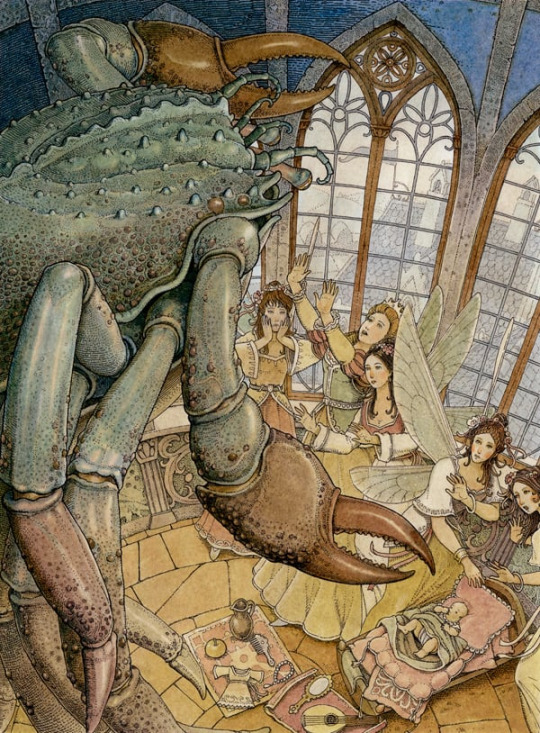
1 ) Despite this being one of the most famous and reprinted fairytales of d'Aulnoy, The White Doe/The Hind in the Woods is one of the more dated of these stories. Not just because of the problematic racist elements of "princess Black of Ethiopia", but also because this story was clearly written in honor and reference to the king of the tme, Louis 14. When the fairies create a palace for princess Desired to live into until her fifteenth birthday, and have inside of it the whole history of the world depicted by art pieces, d'Aulnoy breaks her narration to describe in a poem form the "greatest and most brilliant warrior king of History", who is not named but is very clearly Louis XIV. Earlier, when the queen visited the six fairies' palace, the fairies told her that to build it they hired "the architect of the Sun", who basically recreated "the Sun's palace" but in smaller proportions. This is an obvious reference to Versailles, the wonderful castle of the "Sun-King", Louis 14. And if this wasn't enough, there are also several explicit comparisons to an actual historical event contemporary to the story: a royal wedding. Several times throughout the narration, d'Aulnoy says that the beautiful clothes or gorgeous outfits of Desired are identical with or "right behind in term of beauty" to the outfits and jewels worn at a "certain princess" wedding. These are all comparisons made to a certain woman named Marie-Adélaïde de Savoie, who had just married the duke of Bourgogne, aka... Louis XIV's grandchild.
All of this makes the story feel very NOT "intemporal" since, if you don't have the historical context, all those moments seem a bit weird and mysterious. And yet, this fairytale stayed one of d'Aulnoy's most popular ones... My guess is that what seduced people in this story was the imagery it brought rather than the story or writing itself. People's mind and imagination were struck by the supernatural white doe a prince cannot capture, by the visual of this monstrous crayfish terrorizing a queen and fairies by cursing a baby, by the idea of a beautiful girl doomed to live in the dark until her fifteenth birthday...
In fact, the way madame d'Aulnoy writes this tale to celebrate the royal wedding might explain why the main protagonist here, Desired, has such a young age - barely fifteen. Because Marie-Adélaïde de Savoie, upon being wed to Louis XIV's grandchild, was only twelve... [Note however that madame d'Aulnoy did not condone or enjoyed at all child-weddings of this sort - she herself had suffered from an atrocious arranged wedding in her very early life, and this ended up in a complicated business of manipulations, false accusations, exiles and murders - but when you live in 17th century France, you better be a propagandist of the king, especially if you are a woman who tries to write fiction.]
2 ) The beginning of the fairytale is obviously to put in parallel with Perrault's Sleeping Beauty. Same "gift-giving christening by the fairies" scene, the same way the older and more powerful of the fairies arrives to curse the babe only to have her curse "eased" by the others, the list of gifts offered by the fairies being quite similar to the one of the Sleeping Beauty fairies - more explicitely, in the beginning of Sleeping Beauty it was explicitely said the queen visited/tried several miraculous/healing waters to try to have a baby - which is what the queen does in the beginning of this tale, except here it becomes the start of the plot.
3 ) While there is still the manichean divide typical of French literary fairytales of "good fairy and wicked fairy", here d'Aulnoy plays deliberately on the fairies ambiguity, to show that despite acting by a binary pattern, fairies stay a "gray" set of beings. For example, the Fairy of the Fountain or Crayfish Fairy, despite being one of the main antagonists, starts out in the story as a helper and a benevolent force - and in a twist, still does fulfill her role of "good fairy godmother"... but she does so to the princess Black, who is an unwilling/accidental antagonist to the hero of the tale. (A similar process, where the antagonistic fairy is just the fairy godmother of someone other than the hero, was already used by d'Aulnoy in several of her previous fairytales, including The Blue Bird). As for the six benevolent fairies, while they are all good and nice throughout the story, the narration still highlights that they have two sets of chariots, and that when angered they drive the dragons, snakes and panther-driven chariots, hinting that while they are here helpers they can become antagonists in other stories.
4 ) While there is all the racism I talked about before, it is quite interesting to see here that we have two "anti-portraits" of ugly women, meant to oppose Desired's supreme beauty, two anti-portraits that actually help us understand the beauty criteria at work in this end of the 17th century of France. For Princess Black, we see that her ugliness comes from a "dark skin", "big lips" and a "crushed, large nose" - which are, beyond traits typically "African connoted", the opposite of the French ideal of women with very pale skin, very small noses, very thin lips. But in contrast, we also have Long-Thorn who presents another set of flaws. Just like princess Black there is the nose - here too red and too hooked - but beyond that we also have added poor teeth hygiene (Long-Thorn has black and unaligned teeth), and more interestingly a body too tall and too skinny. In general, when it comes to ugliness d'Aulnoy typically invokes smallness/dwarfism or fatness/obesity, but from time to time she also insists that when a character is too tall or too skinny, they also are ugly. Because in this time era, while they wanted women tall, they still didn't want them as tall as men, and there was still a certain "interest in the curve" as without being very large or big, women needed to be plump and fleshy enough to have a body to appreciate (a bony and skinny body was not a beautiful one at the time). Of course, no need to remind you that this was a set of aristocratic ideals - because only the noble and the rich could afford to be chalk-white and "pleasantly plump".
5 ) People have noted that, funnily, the way prince Warrior falls asleep in the woods after eating apples he found there looks like a "male Snow-White". It is quite interesting because, while there probably wasn't a Snow-White reference (since it is not a typically French tale), madame d'Aulnoy had the very Christian background and culture of the apple as the "forbidden fruit" with the whole Garden of Eden story. Which leads to an interesting point...
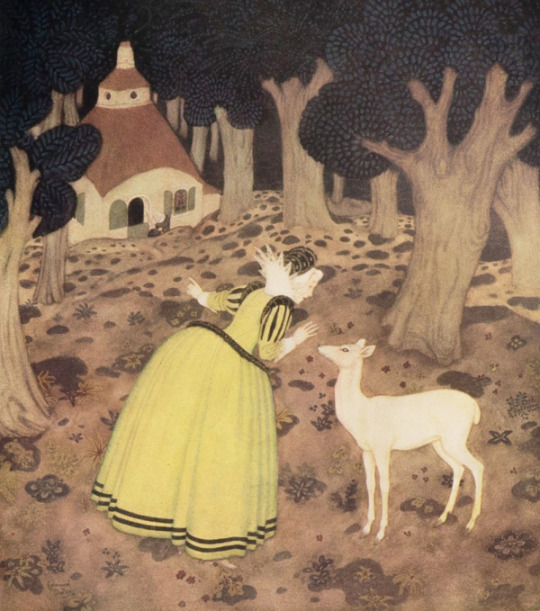
6 ) This fairytale is a sexy tale. It is not an overtly erotic fairytale, no, but there is an obvious VERY romantic if not sexy if not erotic connotation. This however only appears in the second half of the story, when Desired becomes the White Doe. Desired, turned into a prey, and Warrior, improvising himself a hunter, those two lovers, find themselves reunited deep into the woods (the uncivilized, savage, wild world) after purposefully leaving or fleeing their respective courts (the forest is noted to be filled with dangerous predatory animals, such as bears or lions). Warrior hunts down the White Doe, not knowing that she is the girl he is in love with and obsessed over - though he also grows a fondness, familiarity and love for this white doe. And all the while, the White Doe recognizes her hunter as the one she is in love with, and having to flee from him for her life is said to be just as painful as if she was actually hit by his arrows... Madame d'Aulnoy clearly plays here on metaphors and allegories to weave a whole "game of love" or "love as the hunt", "hunt as the love" section. Warrior hunting for the White Doe, the White Doe making sure she can be hunted while never letting herself be caught, it all evokes a bizarre game of seduction. Warrior clearly treats the Doe as more than a simple pet, claiming he "loves" it and wants it to follow him everywhere and to live with him. When the Doe tricks Warrior to escape him, and Warrior complains to his friend, Becafigue jokes about the situation being like an unfaithful woman cheating on her lover - but the prince answers his joke absolutely seriously. And of course, it is after the prince and the princess spend the night together, sharing their love, in human form, that the spell is broken... [Note: In my previous recap I might have written things backward, saying the spell is broken when "night comes and nothing happens". It is the reverse - they talk all ight long together, and as the morning comes she doesn't transform. Sorry about that.]
Beyond the general image, if things weren't clear eough d'Aulnoy keeps addng little details that make the story even more erotic - almost scandalous. The apple section I mentionned - prince Warrior eating apples in the woods before falling deeply asleep reminds of the first human consuming the "forbidden fruit", and it is when the White Doe dares sleep near him for the first time. When the prince catches the Doe or tries to "woo" it with gifts, it is said he keeps petting it, hugging it, caressing it, kissing it - as a pet, as an animal of course, but we reader know that there is a human woman underneath this doe skin, and so the erotic content cannot be escaped. ESPECIALLY when it is said that, after running from each other all day long, both return to their respective bedrooms "sweating and panting, exhausted by the time they spent together". And don't even get me started on how the prince ends up, to conquer and tie up the doe, hitting her with a single arrow in the leg, making her bleed... This is not a fairytale safe for kids.
7 ) Speaking of love, I did not mention it in my recap, but this fairytale is one of the rare ones of d'Aulnoy to have a moral in the end. To summarize it, d'Aulnoy explains that "With the story of this princess that wanted to leave too soon the dark place a wise fairy placed her in to hide her from the sun's light - and the metamorphosis and misfortunes that resulted from it - you will find an illustration of the dangers to which a young beauty exposes herself when she enters too young, too unprepared in the world. If you were gifted with all the traits and qualities that attract love to you, you better know how to hide them, because beauty can be deadly. If you think that by making others fall in love with you, you will shield yourself from love, well know that by giving too much, you always end up taking." So yes, long story short, this is meant to be more than just a fairy love story, but a warning for girls that too young, too beautiful, too unprepared, throw themselves in the world of love, adult and serious romance, and have to be confronted with the many dangers in it.
8 ) On a more "traditional love story" side, this fairytale accumulates ALL the story devices typical of romances of the type to avoid having the two lovers meet each other. In fact, this is the entire point of this story, the apex and climax and culmination: when princess Desired and prince Warrior can finally see each other in person, and talk to each other. At first you had the exchange of portraits and the sending of ambassadors, then you had the fake princess Long-Thorn hijacking the planned meeting, then the two lovers finally got under the same roof, but not only ignored each other's existence, even when meeting each other they didn't recognize themselves thanks t the doe curse... So when they finally see themselves as humans and touch each other as humans and talk a full dialogue, the story is complete and the curse is broken

9 ) Note however that despite the seemingly virtuous and chaste moral added at the end, madame d'Aulnoy does write the character of a more proactive and manipulative princess that "plays" her male lover. It is she that is happy with his caresses and petting and allows herself to be "touched" of the sort, and it is she that sneaks up by her lover's asleep body, and again the terms of the curse are clear - by day she is forced to become a beast, and to do as beasts do, aka to wander in the woods, aka to return to the world of savagery, primal desire and bestial behavior. On the other side, something that might escape a reader at first glance is that prince Warrior is not supposed to be a "prince Charmng" of the traditional genre. As I said, we are inside d'Aulnoy's second book of fairy tales, and so she reached a point where she plays with the conventions of the genre. In the whole hunt story, we have a brutal lover who tries to kill, seriously wounds though he heals it afterward) and ties up with knots his lover, treating her like a prey and a beast (well, because she IS, but you know) - and there is also the use of the peep-hole by Becafigue that solves the whole problem indeed, but by the undignified way of spying into women's bedrooms (Becafigue had already a not so good behavior when he acted as Warrior's ambassador, encouraging Desired's parents to ignore the "powerless" and "silly fairies" and disobey Tulip's warnings - and in the world of fairy tales one should NEVER underestimate the power of fairies)
But that's just for the second part of the story. In the first part, prince Warrior's behavior is also to be criticized. In fact, it is quite ironic that he is called "Warrior" and introduced as the winner of "three battles", because the first part of his character act has him acting as un-warrior, if not un-manly as possible. He becomes a love-stricken mess, he locks himself in his room talking to a portrait, he despairs of not being able to be with his love, he spends his day dreaming, and doing nothing, and wasting away, with no appetite for anything, making himself sick over lethargy and depression - and so fragile that he can't even wait three months for his loved one to come without fearing he would die. And even worse, when his hopes and dreams of love are crushed, he acts as a selfish coward by simply abandoning his parents, his throne, his court and duties, leaving secretly at night with just one letter behind to explain everything to his parents, and isolating himself from the world in desire to just cry on his own fate forever in some isolated place... We've got some emo teen in love vbes here.
10 ) This fairytale is very "medieval" like in tone. Beyond the "fairy christening" scene that is reused everywhere ever since Perrault and inherits from similar medieval scenes, a la Perceforest, the entire topic of the hunter going after a supernatural, white animal he cannot capture is an iconic topos of medieval literature. Typically this doubles or is tied to the hunter meeting some mysterious woman in the woods, preferably near a fountain, who might take him to a wonderful palace - but this happens rather to Desired's mother, who meets a fairy at a fountain, and is then taken to the six fairies' magical castle.
11 ) In terms of folkloric inspiration, if we use the Catalogue Delarue-Tenèze (a local form of the ATU Index but exclusively covering French fairytales), this story is clearly a literary take on the story type 403, "The substituted fiancee", "The fake fiancee". More specifically, it is a literary take on the 403-B (characterized by the metamorphosis of the real fiancee replaced by a fake one), though there is one element typical of the 403-A (the fact that the prince falls in love with a portrait). While inspired by it, madame d'Aulnoy clearly adds several purely literary elements that make this story very unique. For example the scene of the "fairy-gifts" and the "fairy-curse" at Desired's birth, or the presence of a first fiancee for the prince in the person of the princess Black, two elements united by the character of the Crayfish Fairy or Fairy of the Fountain - this all comes from d'Aulnoy's mind, and is traditonnaly not found in French folktales. And this was clearly placed here only to complicate the originally straightforward story into something much more focused on a "twist-and-turn romance".
#the white doe#the hind of the woods#french fairytales#literary fairytales#french fairy tales#madame d'aulnoy#d'aulnoy fairytales#fairytale analysis
121 notes
·
View notes
Text
The latest series of stories I've read in Cinderella Tales From Around the World are from Eastern and Central Europe: Belarus, Ukraine, Poland, the Czech Republic, and Hungary.
*In several Eastern European versions, the Virgin Mary is the girl's helper who gives her finery. She appears either from a well or from inside an oak tree or a fir tree.
*In most of these variants, the heroine goes to church. Only a very few have a ball instead.
*Several also have the stepmother give the heroine a task similar to the Grimms' lentils in the ashes – typically poppy or millet seeds to sort either from the ashes or from sand, or bushels of wheat to clean – and birds help her. Also recalling the Grimms' version (and many others, of course), the third time the heroine flees, the prince usually has the church or palace steps smeared with tar or wax, causing her to lose her shoe.
*In the one Ukrainian version, the heroine has a cow who magically finishes the impossible amount of spinning and weaving the stepmother demands she do every day. Of course the stepmother eventually has the cow killed, but in its entrails the girl finds a grain of corn, which she plants, and it grows into a willow tree. From then on, when she wants finery for church, the tree opens and ladies come out to dress her. In this version, she also loses both of her golden shoes rather than just one in the tar on the church steps.
*Two Hungarian versions, The Three Princesses and Popelusa, and one unnamed Polish version are all near-identical to Finette Cendron. Three daughters of a deposed king are abandoned in the forest, they find an ogre couple's castle, the youngest outwits the ogres and slays them, but then her ungrateful sisters treat her like a servant, etc. Since Madame d'Aulnoy's tale is a literary story, could this be a sign of French influence in Eastern and Central European culture?
*Another Polish version, The Princess with the Pigskin Cloak, combines Cinderella with themes from Snow White. A wicked queen has a magic mirror, which tells her that her stepdaughter is more beautiful than she is. So she orders her servants to kill the princess and bring back her heart, but they let her go and bring back a dog's heart instead. The princess dresses herself in pigskin and finds work as a swineherd, but she knows a certain hollow oak tree that's sacred to the Virgin Mary, and when she goes inside it, she finds a room where she receives finery for church. She finally loses a shoe, is found by the prince and marries him, and the queen dies of rage and grief when her magic mirror tells her the news.
*Several of these versions have the heroine run away from her stepfamily, but unlike most others that use this device, they don't have her work as a servant at the prince's palace, but just find farm work somewhere nearby, a la Perrault's Donkeyskin.
*This brings me to an issue that's appeared in many versions so far, but which I didn't bother to discuss until now. I suppose now is as good a time as any, because it's a theme that appears in many of these Eastern and Central European tales. In so many versions of Donkeyskin/All-Kinds-of-Fur, or any Cinderella story where the heroine leaves her home and finds work as a lowly servant at the royal palace or elsewhere, the prince tends to repeatedly meet her in her rags or animal skins, and he mistreats her. In the versions where she works at the palace, when she takes off his boots or brings him bath water, a towel, and a comb, he throws them at her. Or in versions where she works elsewhere, she meets him on the road, he drops things and she hands them back to him, but instead of thanking her, he hits her with them. Then at the ball or at church, when she's in her beautiful gowns and he's smitten with her, he asks her where she came from, and she replies with allusions to his earlier rudeness, which he fails to understand.
**This is obviously uncomfortable by modern standards. I suppose to the original audiences, it was funny, ironic social commentary: the prince pines over the "mystery princess" with no idea that she's really the scraggly kitchen maid he treats like dirt, and he's clueless when she alludes to her identity. But does it bode well for "happily ever after" when she marries a man who treated her badly? I think this goes to show that in traditional oral fairy tales, there tends to be less emphasis on finding "true love" than on simply escaping from bad situations and achieving safety, comfort, and preferably wealth and high status. It doesn't matter that the prince is a bit of a jerk, what matters is that he makes the girl a princess in the end. Still, when you want her to marry a worthy man and believe he'll make her happy, it's uncomfortable. Different adaptations obviously find different ways to handle it. For example, Grimm's Fairy Tale Classics' "The Coat of Many Colors" avoids all this and has the prince always be kind to Aleia, while "Sapsorrow" from Jim Henson's the Storyteller keeps his rudeness but gives him a small redemption arc, first by finally sharing a sympathetic conversation with "the Straggletag," then by agreeing to marry her when the slipper fits her before he learns her identity.
**Maybe this tradition partly explains why the prince in the classic movie Three Wishes for Cinderella is slightly bratty and rude at first. I know that @thealmightyemprex found that choice off-putting when he reviewed the movie, and I have mixed feelings about it too, but maybe it stems from the fact that in Europe's oral Cinderella stories, bratty princes are surprisingly common.
Speaking of which...
*This book includes the two Cinderella stories from the Czech-Austrian writer Božena Němcová's collection that inspired Three Wishes for Cinderella. One is called The Three Sisters, the other O Popelusce ("Of Cinderella").
**They both follow the same formula. The heroine's kind father (whom the movie replaces with a surrogate-father manservant) sets out on a journey, and his daughter asks him to bring her the first thing that knocks against his head. This turns out to be the branch of a nut tree, containing three nuts, which produce beautiful dresses and shoes that she wears to church three times.
*Each version is slightly different, though, and both are slightly different from the 1973 movie. In The Three Sisters, the heroine Anuska is abused by her own mother and sisters, while in O Popelusce she has a stepmother and stepsisters. Meanwhile, the movie uses a stepmother and just one stepsister. In both stories, the (step)mother cuts the sisters' feet to make the slipper fit, with the movie replaces with their stealing Cinderella's clothes to pass Dora off as her. As I said, both stories have the heroine go to church, while the movie draws on the Western European Cinderella tradition and has a ball, and unsurprisingly, neither the movie Cinderella's sassy tomboy personality nor her dressing as a boy to join a royal hunt can be found in Němcová's original tales.
*Still, it's clear that in some ways the movie draws strongly on Němcová's texts. In The Three Sisters, the second sister's name is Dorotka, which must explain why the one stepsister in the movie is named Dora. And Anuska's first church dress is rose colored with silver trim, just like the movie Cinderella's ball dress
**From now on, in Three Wishes for Cinderella, I think I'll imagine "Anuska" as Cinderella's real name, as it is in The Three Sisters. It's a Czech equivalent of "Annie," and she's definitely a spunky Little Orphan Annie type of character in the movie!
*There's also a Hungarian version that's almost identical to Němcová's, with three dress-producing walnuts. But it has a completely different ending. The heroine doesn't lose a shoe. Instead the prince's servant follows her as far as her house, then puts a golden rose on the gatepost to mark it. Meanwhile, her loving father can't bear to let her be abused anymore and takes her to live with a childless widow in the forest – she's still poor and still has to work, but she's better off than with her stepfamily. When the prince comes to the family's house to look for her, only her stepsisters are there, but then the golden rose magically rises up and floats through the air to the forest cottage, and there she is. But then, in a different (and sadly racist) twist on the common "false bride replaces Cinderella" plot line, a Romani woman pushes the heroine into a lake, steals her magic walnuts, and dresses in her clothes to trick the prince. But the heroine survives by turning into a golden duck, then resumes her true form and finds work as a servant near the palace. But one day, the prince brings his new bride out in public and urges her to tell everyone the story of her life. The Romani woman fabricates a story, but then the real Cinderella speaks up and reveals the truth, and the prince instantly recognizes his true bride. He has the Romani woman executed, the stepmother jailed, and the stepsisters' hair cut off, while the father marries the widow from the forest in a double wedding with his daughter and the prince.
@adarkrainbow, @ariel-seagull-wings, @themousefromfantasyland
#cinderella#fairy tale#variations#cinderella tales from around the world#heidi ann heiner#tw: violence#tw: abuse#tw: racism
29 notes
·
View notes
Text
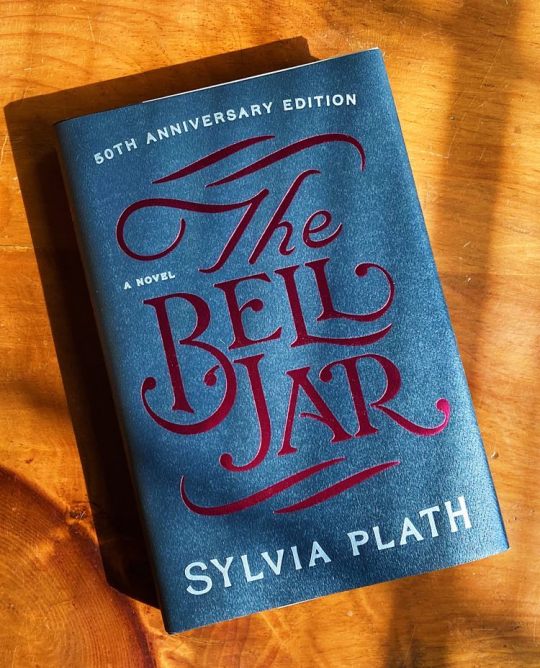


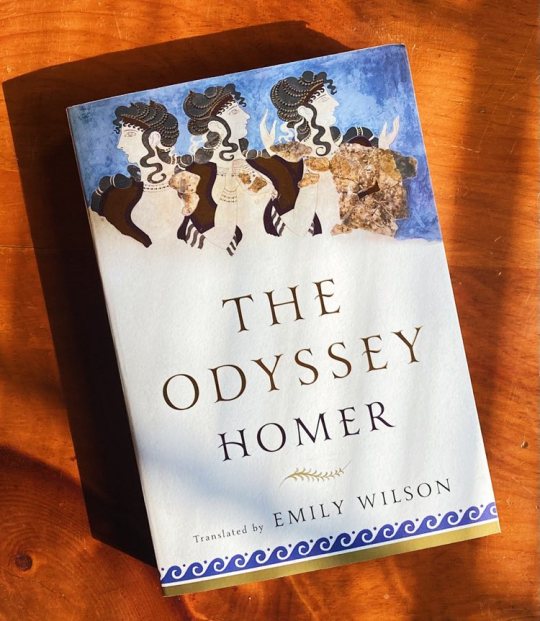

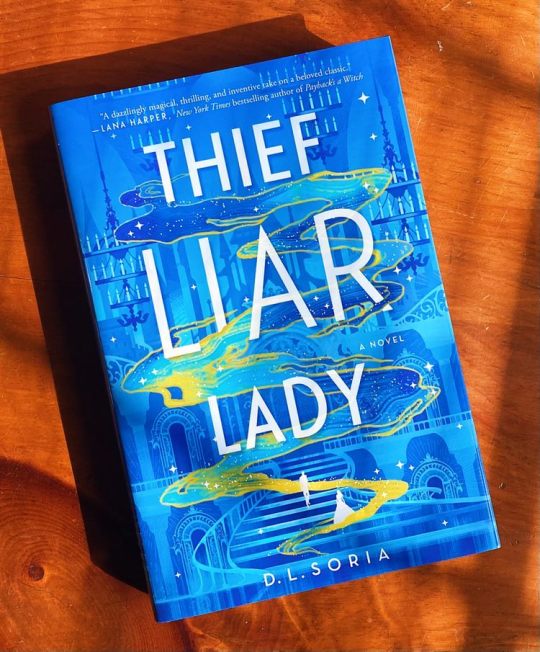
30th Birthday Book Haul!
My 30th birthday was yesterday, so naturally my mom got me some books!
The Bell Jar by Sylvia Plath (50th Anniversary Edition)
The Book of Gothel by Mary McMyne
Painted Devils by Margaret Owen
The Odyssey by Homer, translated by Emily Wilson
Histoires ou contes du temps passé: contes de ma mère l'oie by Charles Perrault, edited by Scott Fish
Thief Liar Lady by D. L. Soria
#booklr#book photography#books#the bell jar#sylvia plath#the book of gothel#mary mcmyne#painted devils#margaret owen#the odyssey#homer#emily wilson#charles perrault#thief liar lady#d l soria
41 notes
·
View notes
Photo

Léon Bazille Perrault (French, 1832-1908) Meditation, n.d.
In the present work, Perrault presents a sitter lost in contemplation, either enrapt by her novel or meditating on her Livre d’heures (Book of Hours). These small volumes included thirty-seven prayers to the Virgin Mary, hence their being seen as feminine and are most often held by a female sitter in portraiture to symbolize virtue and contemplation.
#Léon Bazille Perrault#french art#french#france#classical art#meditation#female portrait#brunette#woman#portrait of a girl#female#portrait#christian art#art study#Mediterranean#european#european art#europa#europe#1800s
147 notes
·
View notes
Text
What You Missed: TDY Act 2
My name is Angela, the director of this Library. I have some spare time, so I figured I would lend you my assistance again.
Follow me.
(Please refer to the content warnings for each chapter on Ao3 before reading.)
Chapter 11 - The Reception of Seven Association

The hydrangea icon for Bookshelf Interlude was Easter egging Gea's appearance and implying his death in the story.
We first heard of "S. Fujiwara" in Chapter 5.

Zinnia's introductory paragraph parallels Mari's original introduction in What Lies Beneath.


Mari and Zinnia's last name, Perrault, comes from Charles Perrault, the author of Little Red Riding Hood.
Gea's final line directly parallels Mari's statement in the penultimate chapter of the Kingdom Arc.


Chapter 13 - A Winter Chill
It isn't mentioned by name, but the flowers Drosera originally gifts Narcissus are gladiolus flowers, most specifically the chartreuse coloring. Gladiolus represents things like strength, endurance, pride, moral integrity...
The second and third flowers Drosera gifts are red roses and baby's breath. Red roses are passion and romance, whereas baby's breath represent sincerity, purity, and love again.
Drosera's mentioned to wear daffodil yellow overalls--Narcissus' flower. How romantic.
Drosera's cat's name is Nighthawk, a reference to the painting by Edward Hopper, which long-time readers will know is one of my favorites. It represents the need for togetherness, the mundane, in a closed off society.
Valerian and Ivy being mentioned at the tail end of Narcissus' dream sequence was to clue the reader into the fact it was a dream: timeline-wise, it doesn't add up.
The description of Drosera's rotting body is a reference to Valerian's talk with Ivy in the Kingdom Arc. (...although it's also just how a body decomposes... but who asked me?)


Chapter 14 - Scarlet Goodbye
The other red Color they're referring to is not the Red Gaze.
Leander is referencing his speech at Chrys' funeral in What Lies Beneath.


Chrys' last name, Faust, was foreshadowed with this line.

Ambrose quotes herself from the Darkest Twilight.


Leander's note was first revealed in the Kingdom Arc.
Chapter 15 - The Weight of Love
The drinks "the woman" orders for herself and Leander are Shark Attack, and Pop My Cherry.
Larkspur is a purple, incredibly toxic (when consumed) plant. Two milligrams is enough to kill an adult. Much less for a child.
Chapter 16 - King in Yellow
Anem mentions, and reveals that he has been on a WARP Train in Chapter 5.

Centra Fujiwara is officially introduced, and confirms that there are indeed four Fujiwara siblings.
We learn Anem's last name, Carpenter. As for why... Jesus was a Carpenter, wasn't he? (I think I'm funny.)
The snack Hastur has at the end of the chapter is Centra's, although the three of them forgot to close it. (I assumed W Corp couldn't reverse what happens to the snacks. There's no bio data for that, and in universe it could be easily written off. It was to reflect that, even when your memories are erased, there would still be a small fragment of them in your heart.
Chapter 17 - Unconditional
"Adele Bloch-Bauer" is a reference to the painting Portrait of Adele Bloch-Bauer I by Gustav Klimt. It's also referred to as "The Woman in Gold". King of Greed's design seems to be taken from it.
Every author has their own language, and the readers learn it overtime. In Chapter 15, we built the association that larkspur is a "negative affection", hence why it's reused in Chapter 17.
Viscaria and Forge's reaction to Press' recollection of her injury is because ruptured globe is a very severe eye injury. If you don't seek emergency treatment, there's a very high chance you will lose vision in your eye. For reference, 30-40% of monocular blindness is caused by ocular trauma. There are some cases where this injury might heal on it's own, but I promise that it's few and far between.
The Book of Press was Easter egging TDY. It was actually written during the developmental stages.
Viscaria and Forge's reaction was to discovering the Book of a Lover was empty. (Press scribbling in the margins was a red herring.)

It was implied from the beginning of the chapter that the Book of a Lover would end up on the Floor of Religion. Don't ever, ever trust my throwaway jokes. I'm planning something evil with them.


Chapter 18 - Evergreen
Valerian's dream references the Darkest Twilight.
Narcissus and Valerian's conversation references Chapter 13.


"The Undertaker" is a reference to Technology, a poem written by Ambrose Bierce, mentioned in Chapter 13 by Mari and later discussed between Ambrose and Valerian. It's a satirical poem about the almost theatrical response to death in the Victorian era. In Chapter 18, Valerian takes the role of "the Undertaker".
The Undertaker references Valerian's Tales of Pruned Flowers.


The poem that the Undertaker quotes is Hermann Hesse's All Deaths. However, the poem goes unfinished.


Valerian, died anew as the Undertaker, parallels Rose's actions towards Mari's corpse in the Darkest Twilight.


Alstroemeria flowers represent strength, love, friendship and devotion. Also, go Google the meaning of "resupinate", if you don't already know it.
Chapter 19 - Devotion's Reward
Lonicera, Valerian's sister is officially introduced. Oh yeah, if you're curious, here's what she looks like! Reading this post means you get to see.
We finally see Forge and Valerian's first meeting, referenced in Chapter 1, Chapter 3, Chapter 12, as well as in this art.

Valerian's sacrifice parallels Forge's first time taking someone else's life.


Hastur's right. Valerian, what are you talking about? That's not light reading by stretch of the imagination.

Multi-chapter
We see Viscaria warn the others about Valerian three times, in Chapter 12, Chapter 17, and Chapter 19. Changing the wording from "Sailor take warning" to "Shepherd take warning" was foreshadowing that Anem would agree with Viscaria. (Sorry for the shitty editing. Tumblr only allows thirty images per post.)

Works Referenced
Aion: Researches into the Phenomenology of the Self - Carl Jung (Mentioned in TDY 12: One Drink More)
Technology - Ambrose Bierce (Mentioned in TDY 13: A Winter Chill, and referenced in TDY 18: Evergreen and TDY 19: Devotion's Reward)
All Deaths - Hermann Hesse (Quoted in TDY 18: Evergreen)
The Phenomenology of Spirit - Hegel (Mentioned in TDY 19: Devotion's Reward)
The Interpretation of Dreams - Sigmund Freud (Mentioned in TDY 19: Devotion's Reward)
Man and His Symbols - Carl Jung (Mentioned and discussed in TDY 19: Devotion's Reward)
The Art of Suicide - Ron Brown (Mentioned in TDY 19: Devotion's Reward)
Narcissus' Act 2 Insults:
Chapter 11, "The Reception of Seven Association"
“Her lapdog, you mean.” Narcissus interjects.
Chapter 12, "One Drink More"
Narcissus stands with her arms crossed, staring at Valerian’s ridiculous sitting position, “You look like an idiot when you do that, you know.” “No, you imbecile.” Narcissus replies, instantly. “No,” Narcissus says, for the eighth time. “You’re such a freak.” “Fuck’s sake.” Narcissus says, smacking Valerian in the head with her pillow. “You’re such an idiot.” “They’re siblings.” Narcissus says, and shakes her head. “You’re a fucking disaster when you drink, aren’t you?” “You’re such a freak.” She catches her breath, and says, “You’re such an idiot.”
Chapter 13, "A Winter Chill" (HEY IT'S CRAZY HOW NARCISSUS USES ALL THE SAME INSULTS ON DROSERA AS SHE DOES INFO TEAM HUH)
“You’re such an idiot,” she shakes her head, pulling the covers further over them both. She doesn’t bother to wipe the tears away, kissing Drosera again and again as she laughs, the whole world safely in her home, in her arms, “I love you too, you idiot.” Narcissus scrutinizes it under her harsh gaze, and then shrugs. “Well, whatever. It’s good you don’t have a hangover. I’m not helping you if it lasts all day. Ivy might, the doormat that she is.”
Chapter 18, "Evergreen"
“You’re such a nerd.” She says, rolling her eyes. “Dramatic ass,” Narcissus mumbles. Narcissus laughs. “You’re such a freak, captain.”
Chapter 19, "Devotion's Reward"
“You motherfucker!” Narcissus shouts, grabbing a nearby pillow and throwing it at Valerian’s face. “Yes, we fucking were! Where in the fresh fuck were you, you twat!?”
Narcissus Insult Count Act 2: 16
Total Insult Count: 26
Most Common Insult: Idiot (7 times), which, according to Google, is 26.923%.
That's all for now.
(Well, I said Act 2's What You Missed would be much longer than the first, didn't I? -Poet)
4 notes
·
View notes
Text
drawing fanart everyday for Danganronpa: A New Generation until the First Episode comes out
Day 99: Newest Release (ft Vera-Avery Perrault from @danganronpa-false-awakening)
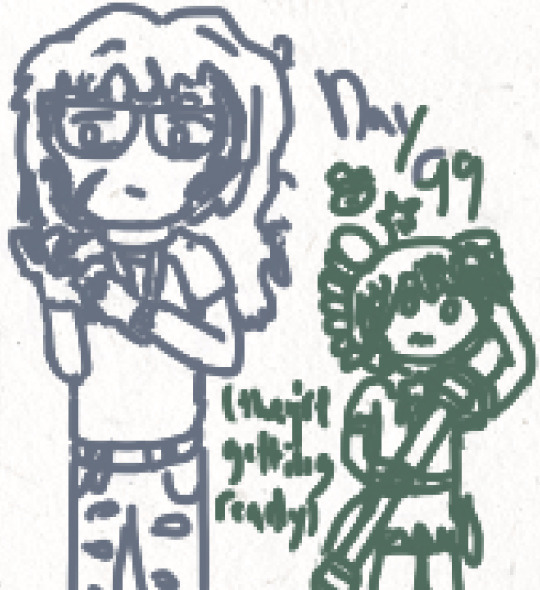
Check out the fangan(s)!
#danganronpa a new generation#DRNG#danganronpa false awakening#drfa#quana yoko#vera-avery perrault#dailydrng
8 notes
·
View notes